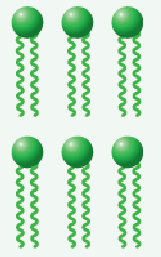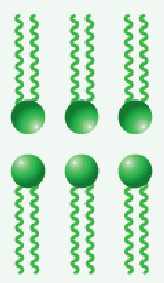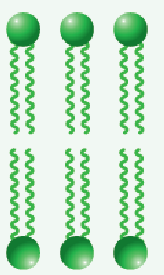
General, Organic, and Biological Chemistry
7th Edition
ISBN: 9781285853918
Author: H. Stephen Stoker
Publisher: Cengage Learning
expand_more
expand_more
format_list_bulleted
Concept explainers
Textbook Question
Chapter 19.10, Problem 1QQ
Which of the following is a correct representation for the structure of a lipid bilayer?



- a. no correct response
Expert Solution & Answer
Want to see the full answer?
Check out a sample textbook solution
Students have asked these similar questions
6.15PM
Sun Mar 30
K
Draw the major product of this reaction. Include
any relevant stereochemistry. Ignore inorganic
byproducts.
Problem 1 of
O
H
[PhзPCH2CH3]*C|¯
NaH
Drawing
>
Q
Atoms,
Bonds and
Draw or tap a ne
8:17 PM Sun Mar 30
Draw the major product of this reaction. Ignore
inorganic byproducts.
HSCH2CH2CH2SH, BF3
Probler
Drawing
Ato
Bonds
Cl
presented by Mr L
How the coprion. (Il Done in no wraction, dew the starting redential)
до
Chapter 19 Solutions
General, Organic, and Biological Chemistry
Ch. 19.1 - Prob. 1QQCh. 19.1 - Which of the following is not a biochemical...Ch. 19.1 - The saponifiable/nonsaponifiable classification...Ch. 19.2 - Prob. 1QQCh. 19.2 - Prob. 2QQCh. 19.2 - Prob. 3QQCh. 19.2 - Prob. 4QQCh. 19.3 - Prob. 1QQCh. 19.3 - Prob. 2QQCh. 19.4 - How many structural subunits are present in the...
Ch. 19.4 - Prob. 2QQCh. 19.4 - How many different simple triglyceride molecules...Ch. 19.4 - Prob. 4QQCh. 19.4 - Prob. 5QQCh. 19.4 - Unsaturated fatty acid residues are structural...Ch. 19.5 - Prob. 1QQCh. 19.5 - Prob. 2QQCh. 19.5 - Prob. 3QQCh. 19.6 - Prob. 1QQCh. 19.6 - Prob. 2QQCh. 19.6 - Prob. 3QQCh. 19.6 - Prob. 4QQCh. 19.6 - Prob. 5QQCh. 19.6 - Prob. 6QQCh. 19.7 - Based on biological function, phospholipids are...Ch. 19.7 - Prob. 2QQCh. 19.7 - Which of the following statements about the...Ch. 19.7 - When the head and two tails structural model is...Ch. 19.7 - Prob. 5QQCh. 19.7 - Prob. 6QQCh. 19.8 - The number of structural building blocks present...Ch. 19.8 - Prob. 2QQCh. 19.9 - Prob. 1QQCh. 19.9 - Which of the following types of membrane lipids...Ch. 19.9 - Prob. 3QQCh. 19.10 - Which of the following is a correct representation...Ch. 19.10 - Prob. 2QQCh. 19.10 - Prob. 3QQCh. 19.10 - Prob. 4QQCh. 19.10 - Which of the following membrane transport...Ch. 19.11 - Which of the following statements concerning bile...Ch. 19.11 - Which of the following statements concerning...Ch. 19.12 - Prob. 1QQCh. 19.12 - Prob. 2QQCh. 19.12 - Prob. 3QQCh. 19.13 - Prob. 1QQCh. 19.13 - Aspirin reduces inflammation and fever by...Ch. 19.13 - Prob. 3QQCh. 19.14 - Prob. 1QQCh. 19.14 - Prob. 2QQCh. 19.14 - Prob. 3QQCh. 19.15 - In which of the following pairs of lipid types are...Ch. 19.15 - Prob. 2QQCh. 19.15 - Prob. 3QQCh. 19 - Indicate whether each of the following general...Ch. 19 - Indicate whether each of the following general...Ch. 19 - Would you expect lipids to be soluble or insoluble...Ch. 19 - Would you expect lipids to be soluble or insoluble...Ch. 19 - What is the biochemical function category for each...Ch. 19 - What is the biochemical function category for each...Ch. 19 - Classify each of the following fatty acids as...Ch. 19 - Classify each of the following fatty acids as...Ch. 19 - Classify each of the following fatty acids as...Ch. 19 - Classify each of the following fatty acids as...Ch. 19 - Prob. 19.11EPCh. 19 - Prob. 19.12EPCh. 19 - Prob. 19.13EPCh. 19 - Prob. 19.14EPCh. 19 - Prob. 19.15EPCh. 19 - Classify each of the fatty acids in Problem 19-14...Ch. 19 - Draw the condensed structural formula for the...Ch. 19 - Draw the condensed structural formula for the...Ch. 19 - Prob. 19.19EPCh. 19 - Using the information given in Table 19-1, assign...Ch. 19 - What is the relationship between carbon chain...Ch. 19 - What is the relationship between degree of...Ch. 19 - What structural change is associated with the...Ch. 19 - Why does the introduction of a cis-double bond...Ch. 19 - In each of the following pairs of fatty acids,...Ch. 19 - In each of the following pairs of fatty acids,...Ch. 19 - What are the four structural subunits that...Ch. 19 - Draw the general block diagram for a...Ch. 19 - Prob. 19.29EPCh. 19 - Prob. 19.30EPCh. 19 - Draw the condensed structural formula of a...Ch. 19 - Draw the condensed structural formula of a...Ch. 19 - Draw block diagram structures for the four...Ch. 19 - Draw block diagram structures for the three...Ch. 19 - Identify, by common name, fatty acids present in...Ch. 19 - Identify, by common name, fatty acids present in...Ch. 19 - Prob. 19.37EPCh. 19 - Prob. 19.38EPCh. 19 - Prob. 19.39EPCh. 19 - Prob. 19.40EPCh. 19 - Prob. 19.41EPCh. 19 - Prob. 19.42EPCh. 19 - Prob. 19.43EPCh. 19 - Prob. 19.44EPCh. 19 - Prob. 19.45EPCh. 19 - Prob. 19.46EPCh. 19 - For each of the triacylglycerol molecules in...Ch. 19 - For each of the triacylglycerol molecules in...Ch. 19 - What are the general names for the products...Ch. 19 - What additional products are formed when a...Ch. 19 - Classify each of the reaction situations in...Ch. 19 - Prob. 19.52EPCh. 19 - Draw condensed structural formulas for all...Ch. 19 - Draw condensed structural formulas for all...Ch. 19 - Prob. 19.55EPCh. 19 - Draw condensed structural formulas for all...Ch. 19 - Why can only unsaturated triacylglycerols undergo...Ch. 19 - Prob. 19.58EPCh. 19 - How many molecules of H2 will react with one...Ch. 19 - How many molecules of H2 will react with one...Ch. 19 - Prob. 19.61EPCh. 19 - Prob. 19.62EPCh. 19 - Prob. 19.63EPCh. 19 - Prob. 19.64EPCh. 19 - Prob. 19.65EPCh. 19 - Prob. 19.66EPCh. 19 - Prob. 19.67EPCh. 19 - Prob. 19.68EPCh. 19 - The following is a block diagram for a...Ch. 19 - Prob. 19.70EPCh. 19 - Prob. 19.71EPCh. 19 - Prob. 19.72EPCh. 19 - Prob. 19.73EPCh. 19 - Indicate whether each of the following statements...Ch. 19 - Based on the head and two tails model for the...Ch. 19 - Based on the head and two tails model for the...Ch. 19 - Prob. 19.77EPCh. 19 - Prob. 19.78EPCh. 19 - Prob. 19.79EPCh. 19 - Prob. 19.80EPCh. 19 - Prob. 19.81EPCh. 19 - Prob. 19.82EPCh. 19 - Prob. 19.83EPCh. 19 - Prob. 19.84EPCh. 19 - Which of the terms triacylglycerol,...Ch. 19 - Prob. 19.86EPCh. 19 - Prob. 19.87EPCh. 19 - Which of the terms triacylglycerol,...Ch. 19 - Prob. 19.89EPCh. 19 - Prob. 19.90EPCh. 19 - Prob. 19.91EPCh. 19 - Prob. 19.92EPCh. 19 - Prob. 19.93EPCh. 19 - Prob. 19.94EPCh. 19 - Prob. 19.95EPCh. 19 - Prob. 19.96EPCh. 19 - Give numerical answers to the following questions...Ch. 19 - Prob. 19.98EPCh. 19 - Prob. 19.99EPCh. 19 - Prob. 19.100EPCh. 19 - In a dietary context, what is the difference...Ch. 19 - Prob. 19.102EPCh. 19 - Prob. 19.103EPCh. 19 - Prob. 19.104EPCh. 19 - Indicate whether each of the following statements...Ch. 19 - Indicate whether each of the following statements...Ch. 19 - What is the function of unsaturation in the...Ch. 19 - Prob. 19.108EPCh. 19 - Prob. 19.109EPCh. 19 - Prob. 19.110EPCh. 19 - Prob. 19.111EPCh. 19 - Prob. 19.112EPCh. 19 - Prob. 19.113EPCh. 19 - Prob. 19.114EPCh. 19 - Prob. 19.115EPCh. 19 - Prob. 19.116EPCh. 19 - Prob. 19.117EPCh. 19 - Prob. 19.118EPCh. 19 - Prob. 19.119EPCh. 19 - Prob. 19.120EPCh. 19 - Prob. 19.121EPCh. 19 - Prob. 19.122EPCh. 19 - Prob. 19.123EPCh. 19 - Prob. 19.124EPCh. 19 - What is the medium through which bile acids are...Ch. 19 - What is the chemical composition of bile?Ch. 19 - At what location in the body are bile acids stored...Ch. 19 - Prob. 19.128EPCh. 19 - Prob. 19.129EPCh. 19 - Prob. 19.130EPCh. 19 - Prob. 19.131EPCh. 19 - Prob. 19.132EPCh. 19 - Prob. 19.133EPCh. 19 - Prob. 19.134EPCh. 19 - Prob. 19.135EPCh. 19 - Prob. 19.136EPCh. 19 - Prob. 19.137EPCh. 19 - Prob. 19.138EPCh. 19 - Draw the structure of an anabolic steroid with the...Ch. 19 - Prob. 19.140EPCh. 19 - What is the major structural difference between a...Ch. 19 - What is the major structural difference between a...Ch. 19 - Prob. 19.143EPCh. 19 - What structural feature distinguishes a...Ch. 19 - Classify each of the following types of lipids as...Ch. 19 - Classify each of the following types of lipids as...Ch. 19 - Prob. 19.147EPCh. 19 - Prob. 19.148EPCh. 19 - Prob. 19.149EPCh. 19 - Draw the condensed structural formula of a wax...Ch. 19 - Prob. 19.151EPCh. 19 - Biological waxes have a head and two tails...Ch. 19 - Which of the substance categories biological wax,...Ch. 19 - Which of the substance categories biological wax,...Ch. 19 - Prob. 19.155EPCh. 19 - Prob. 19.156EPCh. 19 - Prob. 19.157EPCh. 19 - Indicate whether or not each of the following...Ch. 19 - Prob. 19.159EPCh. 19 - Prob. 19.160EPCh. 19 - Prob. 19.161EPCh. 19 - Prob. 19.162EP
Knowledge Booster
Learn more about
Need a deep-dive on the concept behind this application? Look no further. Learn more about this topic, chemistry and related others by exploring similar questions and additional content below.Similar questions
- 8:16 PM Sun Mar 30 K Draw the major product of this reaction. Ignore inorganic byproducts. Proble 1. CH3MgBr 2. H3O+ F Drawingarrow_forwardо но оarrow_forwardName the major organic product of the following action of 4-chloro-4-methyl-1-pentanol in neutral pollution 10+ Now the product. The product has a molecular formula f b. In a singly hain, the starting, material again converts into a secule with the molecular kormula CIO. but with comply Draw the major organic structure inhalationarrow_forward
- Macmillan Learning Alcohols can be oxidized by chromic acid derivatives. One such reagent is pyridinium chlorochromate, (C,H,NH*)(CICTO3), commonly known as PCC. Draw the proposed (neutral) intermediate and the organic product in the oxidation of 1-butanol by PCC when carried out in an anhydrous solvent such as CH₂C₁₂. PCC Intermediate OH CH2Cl2 Draw the intermediate. Select Draw Templates More с H Cr о Product Draw the product. Erase Select Draw Templates More H о Erasearrow_forwardIf I have 1-bromopropene, to obtain compound A, I have to add NaOH and another compound. Indicate which compound that would be. A C6H5 CH3arrow_forwardProvide the reagents for the following reactions.arrow_forward
- If I have 1-bromopropene, to obtain compound Z, I have to add two compounds A1 and A2. Indicate which compounds are needed. P(C6H5)3arrow_forwardDraw the major product of this reaction. Ignore inorganic byproducts. Assume that the water side product is continuously removed to drive the reaction toward products. O CH3CH2NH2, TSOH Select to Draw >arrow_forwardPredict the major organic product(s) for the following reaction.arrow_forward
- Predict the major organic product(s) for the following reactions.arrow_forwardProvide the complete mechanism for the reactions below. You must include appropriate arrows,intermediates, and formal charges.arrow_forwardIndicate the products obtained by reacting fluorobenzene with a sulfonitric mixture.arrow_forward
arrow_back_ios
SEE MORE QUESTIONS
arrow_forward_ios
Recommended textbooks for you
 General, Organic, and Biological ChemistryChemistryISBN:9781285853918Author:H. Stephen StokerPublisher:Cengage Learning
General, Organic, and Biological ChemistryChemistryISBN:9781285853918Author:H. Stephen StokerPublisher:Cengage Learning Organic And Biological ChemistryChemistryISBN:9781305081079Author:STOKER, H. Stephen (howard Stephen)Publisher:Cengage Learning,
Organic And Biological ChemistryChemistryISBN:9781305081079Author:STOKER, H. Stephen (howard Stephen)Publisher:Cengage Learning,

General, Organic, and Biological Chemistry
Chemistry
ISBN:9781285853918
Author:H. Stephen Stoker
Publisher:Cengage Learning

Organic And Biological Chemistry
Chemistry
ISBN:9781305081079
Author:STOKER, H. Stephen (howard Stephen)
Publisher:Cengage Learning,
Biomolecules - Protein - Amino acids; Author: Tutorials Point (India) Ltd.;https://www.youtube.com/watch?v=ySNVPDHJ0ek;License: Standard YouTube License, CC-BY